Vitals Read online
Page 3
All around us, the seafloor was covered with broken sheets of lava like lost pieces of a giant’s puzzle. The canyon walls, no more than fifty feet to either side, were not visible in the murk. The side-scanning sonar revealed that we were surrounded by what looked like columns in an ancient temple. Once, a lake of magma had pooled in the can-yon and crusted over. Splits in the cap had allowed seawater to seep through and solidify the columns. The lava beneath the crust had then drained. As the molten basalt retreated, the sea had crushed the cap. Only the columns remained.
Dave pushed Mary’s Triumph backward with a few spurts of the thrusters. I could make out the fishing boat’s name, just as Dave remembered it, painted in a broken arc on the smashed stern.
“Let’s go east,” Dave said. “And up a bit. The boat dragged a few lines behind her when she went down.”
5
We met in the mansion’s Great Room, as Betty Shun described it, almost sixty feet long and thirty feet wide. This was the room that smelled of anise and crème de menthe. Skylights hidden in the forest above dropped the day’s last filtered green light on a broad mahogany desk covered with magazines, newspapers, and a small laptop computer. Couches upholstered in rich yellow fabric awaited our attentions, like the laps of generous houris. The furniture floated on a velvety-smooth mauve carpet accented by white moons and antique yellow suns.
Betty Shun introduced us and gave Montoya a packet she had printed out a few minutes earlier. Then she left, wagging her finger and saying, with a smile, “You boys be good.”
Montoya held out his hand. I gripped it and judged it, which is always unfair and completely natural: skin moist, pressure light. A polite handshake. He was good-looking in a rugged way, with a short, pushed-up nose and probing black eyes. His cheeks had been pocked by youthful acne and a thin black nubbin of beard adorned his chin. His smile was quick but shy. His clothes fit loose but well, and his sandals were old friends, worn and comfortable. Montoya would not have impressed anyone had they met him on a street corner.
He invited me to sit at a long, ornate brass and maple bar.
“Welcome to the Fortress of Solitude,” he said. “I’m the butler. Betty is really Supergirl. Coffee now, wine with dinner at eight, Madeira for dessert, and late-night chat, if you’d care to stay.” He went behind the bar. “What’s your jolt?”
“Latte,” I said. “Please.”
Montoya had sold TeraSpin three years earlier and spent most of his time serving on the boards of charities. He had given grants and funded scholarships for more than sixty universities around the world.
He stood before the professional espresso machine and hummed the theme from The Empire Strikes Back as the valve roared and spat. Having my milk steamed by one of the world’s wealthiest men was intriguing. I thought there was a touch of ennui in his eyes, but it’s easy to overanalyze the rich. Maybe he looked that way because he had been disappointed so often.
“Did Betty tell you about Gus and Phil?” Montoya asked as he poured foam and hot milk from the small steel pitcher.
“She did,” I said.
Being around Gus Beck made me nervous. He was twitchy and far too brilliant. I never knew when he might erupt in a fit of righteous technical criticism. Phil Castler was just the opposite—old-world gracious, fierce in debate but otherwise mild and self-effacing.
Montoya sprinkled cocoa over the peak, handed me my latte, and came around the bar carrying another mug filled with plain black coffee. He sat on the stool next to mine. “And?”
I smiled. “Uploading into cyberspace, living in a computer or a robot brain, immortalized in hardware, in silicon . . .”
“Makes you laugh?” Montoya asked, sipping.
“No. I just don’t think it’ll happen in time for me and thee.”
“Tell me why,” Montoya asked primly.
“The devil is in the details. The mind is the body. Gus is still back with Descartes in believing they can be separated.”
“Explain.”
“Downloading the brain’s patterns isn’t enough. Everything you know and think is embedded in your neurons, but your consciousness is in the cells of your entire body. Your mind is really a complex of brains, with major contributions from the nervous and immune systems. The flesh is intelligent, all flesh, and all of it contributes to your personality at one level or another. Take the body away, and you become near-beer, bitter without the kick.”
Montoya chuckled and looked away, rubbing one hand on his breast. “Why not capture the state of each cell, each neuron, in a computer? A super MRI machine could do something like that, right?”
“Each one of our cells is like a huge factory with thousands of machines and workers. What the cells do, the decisions they make, how they live, contributes to what you think and how you behave. We won’t capture that much detail in any artificial memory in our lifetime. Even if we could, one human being would probably fill all the computer capacity on Earth.”
Montoya nodded. “What about Castler—sending in nanomachines and cleaning up an aging body?”
Easy questions so far. “It’s a good scheme, quite possible, but how old are you, Owen?”
“Forty-five,” he said.
“You’ll be ninety before nanotech is proven and safe. Fifty years creeps up awfully fast.”
I was playing down the prospect of Phil’s success a little; thirty years was not unlikely.
“You’re not just saying that to get me to fund you?”
“I think Gus and Phil are brilliant. I encourage you to fund them both. But their ideas are longer-term.”
“They hate being told that,” Montoya said. He looked at me squarely. “How are your theories any more convincing?”
“I won’t turn you into a corpsicle and hope somebody knows how to fix you in a hundred years. I won’t shave you down neuron by neuron, then upload you into some memory bank no one has even begun to design. I can begin to increase our life span in the next few years, with minimal intervention. If you and I want to stay young and healthy longer,” I said, closing in, “our only hope is medical maintenance, keeping our bodies vigorous. Specifically, mitochondrial chromosome adjustment.”
“Beck turned red when I told him I was meeting with you,” Montoya said. “He said you were insufferably arrogant. He said you were rehashing theories proven wrong back in the 1920s. I thought about asking Betty to fetch him a spit-cup.”
“There’s a lot of passion there,” I said. Gus and Phil were my rivals and might have called me a fool once or twice, but they deserved a modicum of respect, even from a man as wealthy as Montoya.
“I agree, they’re way off track,” Montoya said. “They’ll never see the promised land. I’ve read your papers. I like them. Tell me more.”
6
“That’s new,” Dave said, swiveling the DSV and shining our upper bank of floods on a clump of tube worms. Beyond the worms, the sub’s lights shimmered through white clouds like old, chalky paint: a bacteria-rich spring, small in diameter but productive.
“Let’s see.” He sidled the sub in a few meters. I pulled down my data glove, feeling the plastic limiter box click into place, guided a sensor-laden mechanical arm, and pushed a probe into the spring outflow.
“Shove it, shove that old rectal thermometer right into the Earth’s fundament,” Dave said with another leer. He wasn’t funny. “Eighty-six degrees Celsius,” he said.
“Congratulations.”
“I’m just the pilot,” he said matter-of-factly. “You’re the researcher. You’ll get the credit.”
7
Montoya listened to my presentation for two hours. We broke for a quick dinner—crab cakes and stir-fried vegetables, served with an excellent Oregon pinot gris. We were studying each other, and neither of us was willing to reveal too much. Looking a little glazed, he called a break at 10:00 p.m. Betty Shun appeared to take me on a tour of the house while Montoya fielded some phone calls.
The glass wall fronted the east wing
. The west wing ended in a boat launch built into the native rock of another cove. It easily doubled what had at first seemed merely huge. The floor plan of Montoya’s Fortress of Solitude had to total a hundred thousand square feet—two and a third acres, topped by wind-winnowed forest, the air-conditioner vents camouflaged as tree stumps and the condensers as moss-covered boulders.
“Don’t try to take this tour on your own, Dr. Cousins,” Shun warned me on the clay floor of an indoor tennis court. “Without a permission wand, you’ll be locked in the first room you enter.” She held up a tiny plastic bar. “Security will have to come and save you.” She looked at her wristwatch. “Owen doesn’t need a wand. The house recognizes him on sight. His steps, his voice—”
“His DNA?”
She smiled and tapped her watch. “Owen should be ready now. We are exactly 115 feet from him, as the laser flies.” She gave me a look that might have spoken volumes, but I was unable to open, much less read, any of them. “Why were you let go from your last research job?”
“At Stanford?”
She nodded.
“Money ran out in my department. I was junior.”
“Wasn’t there some dispute?”
“A few of the faculty disagreed with my work. But my papers still get published, Ms. Shun. I am still a reputable scientist.”
“Owen is fond of oddball thinking, and even fonder of tweaking academic whiskers. But I hate to see him disappointed, Dr. Cousins.”
“Hal.”
She shook her head politely; keep it business. “Owen needs something to commit to. Something solid.”
Betty Shun left me with Montoya on the west wing’s biggest porch, overlooking the boat cove. It was eleven-thirty. We talked pleasantries for a while and listened to the splash of the waves, blankets over our legs, sipping from chilled glasses of draft beer, our heads warmed by radiant heaters. Did I like baseball? Montoya owned a baseball team in Minneapolis. I conversed as much about baseball as I could, having read USA Today in the Hotel W that afternoon.
Then Montoya drew back to our main topic.
“You don’t say much about reduced caloric intake,” he said. “According to most experts, that’s the only antiaging technique proven to work.”
“It’s just the tip of the iceberg,” I said.
“You haven’t sunk your harpoon yet, Hal. I need to know more—much more.” He smiled wearily. Make or break.
I put my glass on the center table and leaned forward. “The real problem is that we breathe. We respire. We accumulate poisons over time because of the way we burn fuel. We’re part of a vast biological conspiracy, billions of years old, and we have to shake ourselves loose and grab the reins.”
“You’ve experimented on yourself, haven’t you?” Montoya asked.
“I’d rather keep some things confidential until we firm up a relationship.”
“You have experimented,” he said, brooking no dissent. “You’ve injected yourself with virus shells delivering modified genes, but nobody knows which genes, nobody on my payroll, anyway.”
“I’ve taken one or two things beyond the theoretical stage,” I admitted.
Montoya lifted his eyes to meet mine. “And?”
“Obviously, I didn’t screw it up too badly. I’m still here. But it’s just the beginning,” I said. “Until I know why individual obsolescence took hold a few billion years ago, I’m still going to grow old and die. And so will you.”
I was still being vague, and I knew it. The sweat under my armpits chafed.
“So far we’ve been dancing around the center. It’s been a great dance, but I need something more. I’ve signed your NDA, Hal.” Montoya smiled, putting on the patented charm that had brought him so far in the business world. “Give me a hint what’s behind door number one. It’ll be worth a few days on my ship, gratis. I’ll put that in writing, too, if you want.”
“No need,” I said, swallowing.
“I’m all ears. I have all night.”
“It won’t take that long,” I said, mentally arranging my cue cards. This was probably going to be the most important speech of my life. “I start by altering a few genes in E. coli, common gut bacteria.” I tapped my abdomen. “Then I modify a few of my own genes . . .”
“Radical gene therapy,” Montoya mused.
“Some call it that,” I said. “But it’s just baby steps to solving an ancient murder mystery. Who designed us to die, and why? It turns out we’re being betrayed by cellular organelles, little organs, called mitochondria. Mitochondria make ATP. ATP is the molecule our cells use to store and release energy. Once upon a time, mitochondria were bacteria. We know that because they have their own little loops of DNA, like bacterial chromosomes.”
He watched me intently. “Respiration . . . seems pretty important. Breathing, using oxygen, right?”
I nodded.
“So why do we let old bacteria do that for us?”
“Mitochondria used to live free, a few billion years ago. Then they invaded primitive host cells, became parasites. Eventually, the hosts—our one-celled ancestors—found that the invaders had a talent. They were eight times better at converting sugar molecules into ATP. We formed a symbiotic partnership. The mitochondria became essential. Now, we can’t live without them.”
“And mitochondria tell us when to grow old and die?”
“They have a big say.”
He pinched and tugged his earlobe. “Explain.”
“The mitochondria turn state’s evidence. Kind of a fifth column. They monitor our stress levels, track our physical and mental health, and pass that information on to tiny bacteria hiding in our tissues.”
“We have germs in our tissues?” Montoya asked, frowning. “Doesn’t the immune system clean them out?”
“Some bacteria burrow deep and hide out for years. They trigger diseases like atherosclerosis—clogging the arteries.”
“So what if I just spend my life relaxing? No stress.”
“Everything we do causes different kinds of stress,” I said. “You can’t stay healthy without some stress. But if we fail at our job, if we’re unlucky in love, if we get sick, if we’re feeling angry or frustrated or sad, our bodies fill with stress hormones. Bacteria and viruses mount challenges to our immune system, and the immune system is more likely to fail. But even if the immune system doesn’t fail, over time, for some reason, we don’t recover as quickly. We accumulate genetic errors in our cells. We deteriorate. We get weaker. The mitochondrial network reads these signs and reports to the deep-tissue bac-teria, and the whole conspiracy tattles to the bugs in our gut. The bugs, in turn, tell the mitochondria to work less efficiently. That’s the ultimate cause of aging. Together, they act as judge, jury, and ultimately, executioner.”
“That’s a lot to swallow all at once,” Montoya said. “I’m skeptical about bacteria communicating and cooperating. Don’t they just grow and eat randomly?”
“What kind of toothbrush do you use?” I asked.
Montoya shook his head, puzzled. “Does it matter?”
“Just tell me.”
“A Sonodyne. I’ve got a big investment in the company.”
“It uses high-frequency vibrating bristles, right?”
“Yeah.”
“There are over five hundred different kinds of bacteria in our mouths,” I said. “Not all of them cause cavities. Some repel or destroy their disease-causing cousins. A healthy mouth is more like the Amazon jungle than a Listerine commercial.”
Montoya puffed into his palm and sniffed the result. “Do I offend?” he asked, smiling.
I smiled back. “Not at all. But some of them stick to each other and cement themselves to your teeth. After a while, they build up layers of bacterial architecture on your enamel. Dentists call it plaque. It’s a community of cooperating bacteria of many different kinds—a biofilm. The Sonodyne vibrates the biofilm until it falls apart—breaks the cement the bacteria use to fasten to the teeth. In essence, you’re demolishing
their houses and shaking them up so bad they can’t even talk.”
“Look, Ma, no cavities,” Montoya said.
“Other bacterial communities colonize your skin, your mucus membranes, and, of course, your gut, where they perform essential digestive services.” I could sense myself overstepping the bounds of what my angel might want to hear. “There are so many bacteria in your intestines that even people who are starving excrete feces—made up mostly of bacteria.”
“Wow,” Montoya said. “Gossip in the big germ city. But if we’re so important to them, why try to bring us down?”
“A herd of antelopes sheds the old and tired to make way for the young and fit. Lions prune the herd like a rosebush. The lions may act like killers, but actually they’re partners with a big investment in the health of the herd. Bacteria are more than just important partners—they’re the most successful predators of all. We’re their herd. Aging and death is one way to keep the herd fresh and healthy.”
“So, how do bacteria cause aging?” Montoya asked, leaning forward and moving his tongue over his lips.
“Bacteria in our gut produce quantities of a tiny protein I call hades.” Now I was really sweating. “Our tissues open special receptors, coded for in genes I believe once came from mitochondrial chromosomes. Hades creeps in. It winds up a molecular clock days or weeks after we’re born. With each tick of the clock, the bacteria increase the amount of hades they import into our tissues. Hades alters the way mitochondria work—jams them up, makes them convert ATP with less efficiency. We accumulate the resulting oxidants and free radicals, byproducts of respiration that damage our DNA. Our cells can’t repair the damage. We start to lose our youthful resilience. We grow old.”
Montoya held up his hand and rubbed a few small, liver-colored patches on the back. “Age spots,” he said. “And I’m not that old. So what’s in it for the bacteria?”

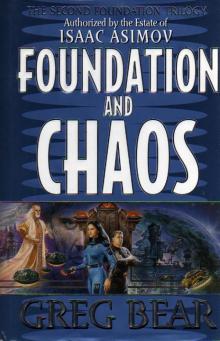 Foundation and Chaos
Foundation and Chaos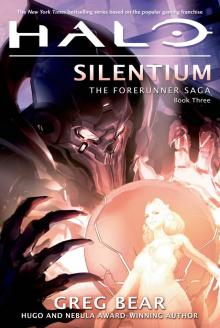 Halo: Silentium
Halo: Silentium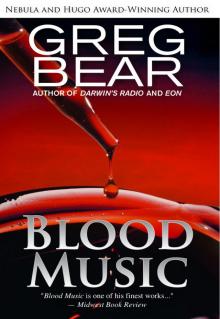 Blood Music
Blood Music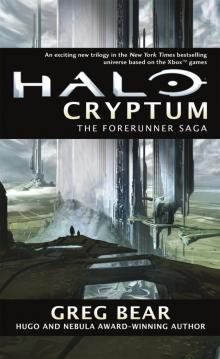 Halo: Cryptum
Halo: Cryptum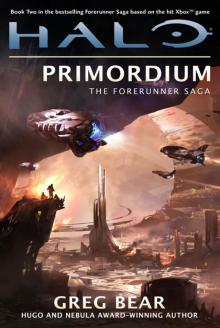 Halo: Primordium
Halo: Primordium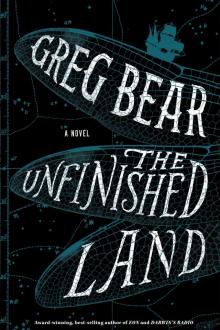 The Unfinished Land
The Unfinished Land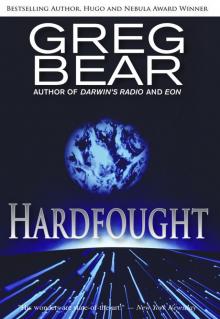 Hardfought
Hardfought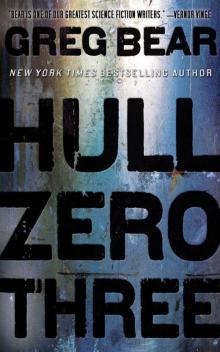 Hull Zero Three
Hull Zero Three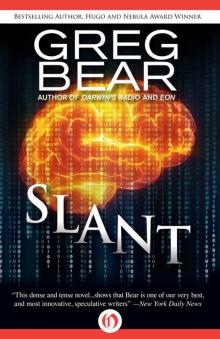 Slant
Slant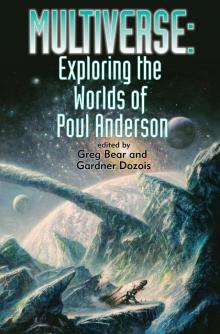 Multiverse: Exploring the Worlds of Poul Anderson
Multiverse: Exploring the Worlds of Poul Anderson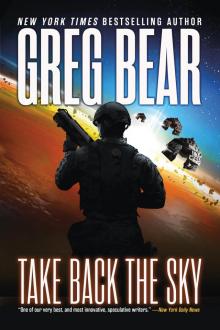 Take Back the Sky
Take Back the Sky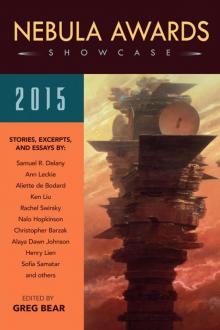 Nebula Awards Showcase 2015
Nebula Awards Showcase 2015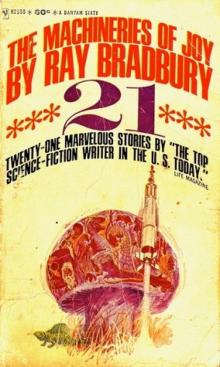 Machineries Of Joy
Machineries Of Joy A Martian Ricorso
A Martian Ricorso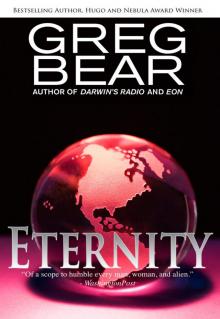 Eternity
Eternity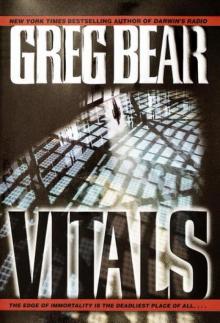 Vitals
Vitals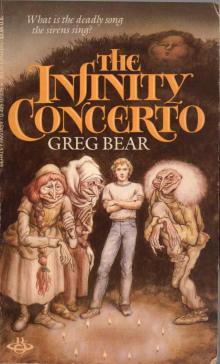 The Infinity Concerto
The Infinity Concerto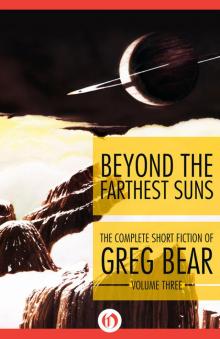 Beyond the Farthest Suns
Beyond the Farthest Suns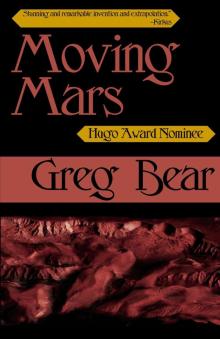 Moving Mars
Moving Mars Quantico
Quantico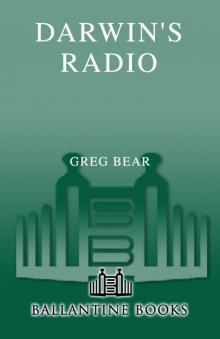 Darwin's Radio
Darwin's Radio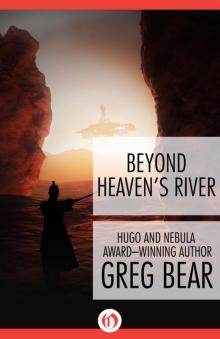 Beyond Heaven's River
Beyond Heaven's River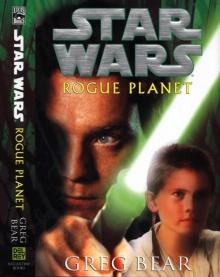 Star Wars - Rogue Planet
Star Wars - Rogue Planet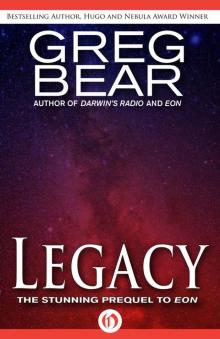 Legacy (Eon, 1)
Legacy (Eon, 1) War Dogs: Ares Rising
War Dogs: Ares Rising Sisters
Sisters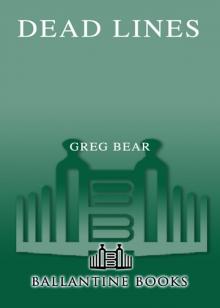 Dead Lines
Dead Lines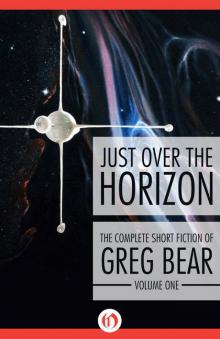 Just Over the Horizon (The Complete Short Fiction of Greg Bear Book 1)
Just Over the Horizon (The Complete Short Fiction of Greg Bear Book 1)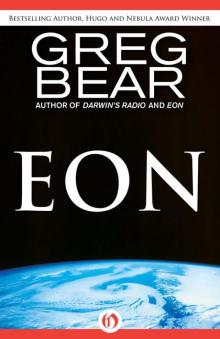 Eon (Eon, 2)
Eon (Eon, 2)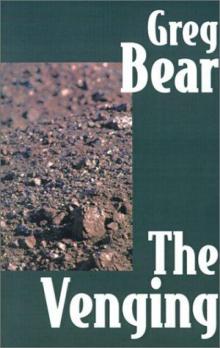 Venging
Venging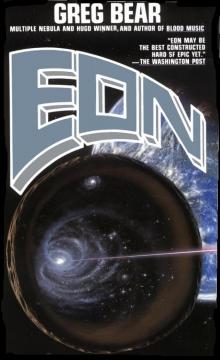 Eon
Eon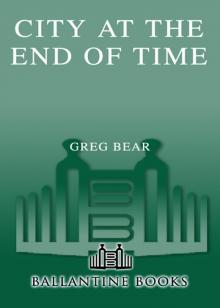 City at the End of Time
City at the End of Time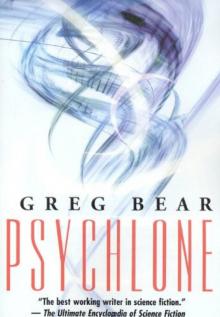 Psychlone
Psychlone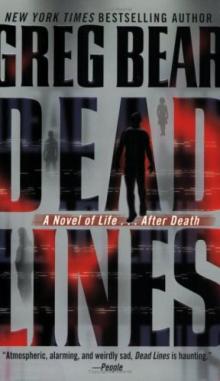 Dead Lines, A Novel of Life... After Death
Dead Lines, A Novel of Life... After Death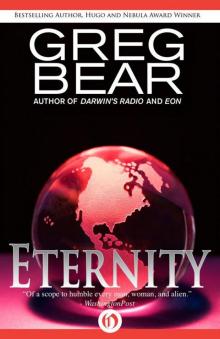 Eternity (Eon, 3)
Eternity (Eon, 3) Cryptum
Cryptum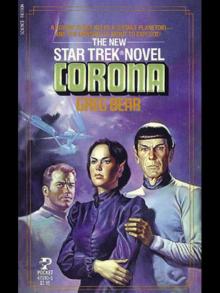 Corona
Corona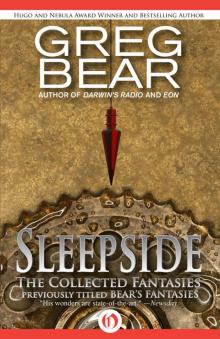 Sleepside: The Collected Fantasies
Sleepside: The Collected Fantasies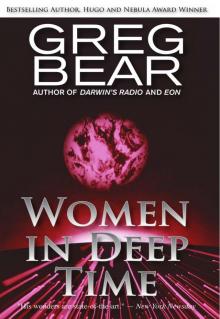 Women in Deep Time
Women in Deep Time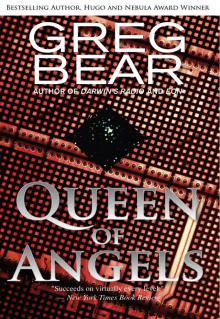 Queen of Angels
Queen of Angels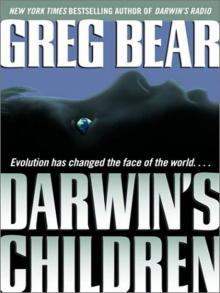 Darwin's Children
Darwin's Children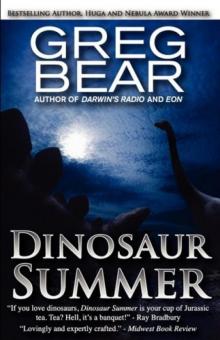 Dinosaur Summer
Dinosaur Summer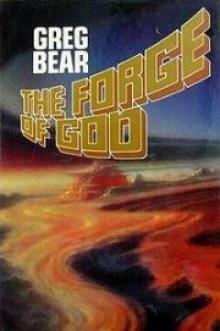 The Forge of God tfog-1
The Forge of God tfog-1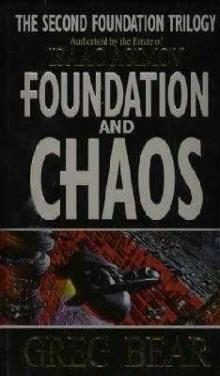 Foundation and Chaos f-9
Foundation and Chaos f-9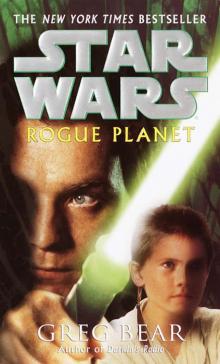 Star Wars: Rogue Planet
Star Wars: Rogue Planet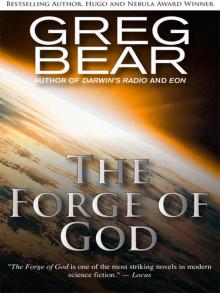 The Forge of God
The Forge of God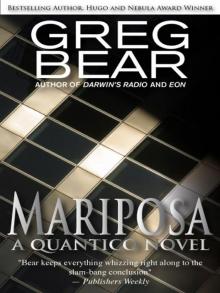 Mariposa
Mariposa Halo: Cryptum: Book One of the Forerunner Saga
Halo: Cryptum: Book One of the Forerunner Saga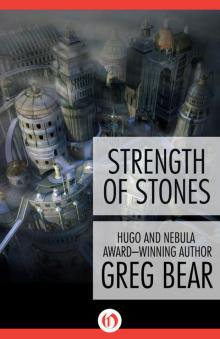 Strength of Stones
Strength of Stones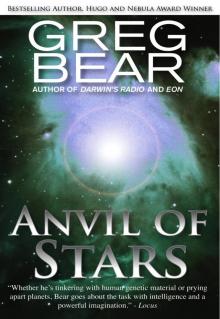 Anvil of Stars
Anvil of Stars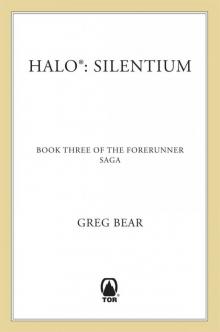 B00AQUQDQO EBOK
B00AQUQDQO EBOK Anvil of Stars tfog-2
Anvil of Stars tfog-2 Ares Rising 1: War Dogs
Ares Rising 1: War Dogs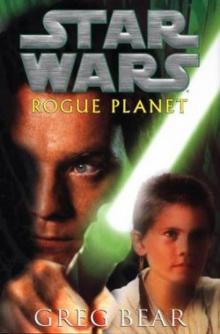 Rogue Planet (star wars)
Rogue Planet (star wars)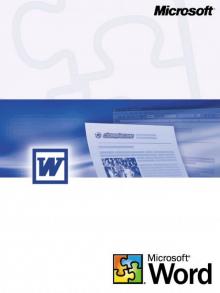 The Machineries of Joy
The Machineries of Joy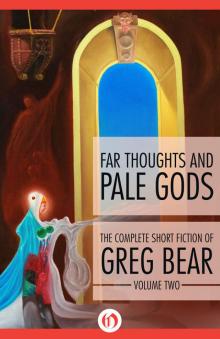 Far Thoughts and Pale Gods
Far Thoughts and Pale Gods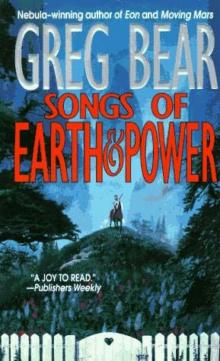 Songs of Earth and Power Omnibus
Songs of Earth and Power Omnibus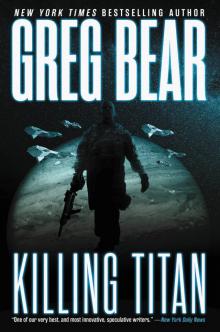 Killing Titan
Killing Titan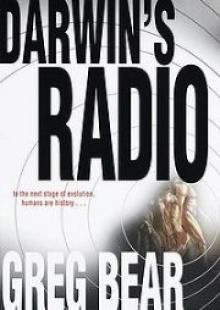 Darwin's Radio d-1
Darwin's Radio d-1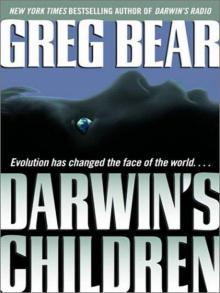 Darwin's Children d-2
Darwin's Children d-2